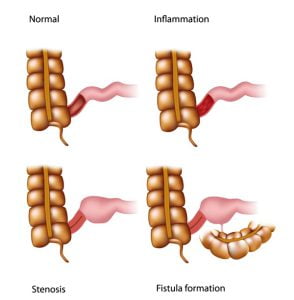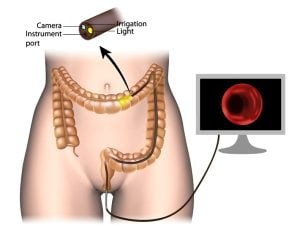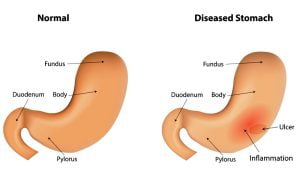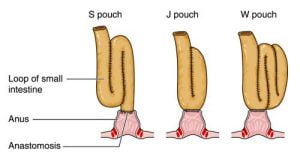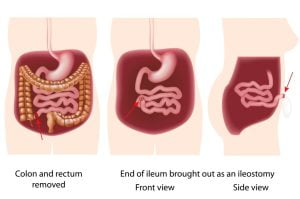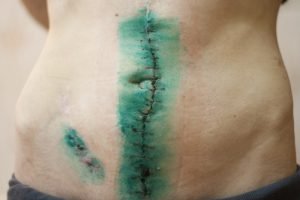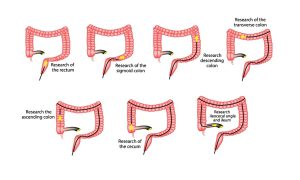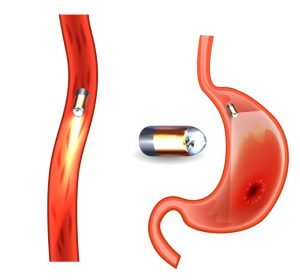Browsing: Crohn’s Disease Graphics
Comprehensive Information, Resources, and Support on Crohn’s Disease
The most common part of the small intestine to be affected by Crohn’s disease is the last portion, called ileum. This disease in which ileum is affected is called Crohn ileitis. Crohn’s ileitis is thought to account for around 30% of cases of Crohn’s disease. Treatment can help, but the condition can’t be cured completely.
In a colonoscopy, the examiner uses a colonoscope, which is a long, flexible, tubular instrument about 1/2 inch in diameter, to evaluate the inside of colon for diagnosing diseases such as Crohn’s disease. The device transmits image of the lining of the colon that allows the examiner to look for any abnormalities. The colonoscope is inserted through the rectum and moved to the other end of the large intestine.
Crohn’s disease is a chronic inflammatory disease of the digestive tract. It is a type of inflammatory bowel disease (IBD) that may affect any part of the gastrointestinal tract from mouth to anus. The disease can affect any part of the digestive tract. Stomach cramps can occur even if you’re in remission from Crohn’s.
Formation of S J and W pouches after colostomy is shown in the image. Ileal pouch-anal anastomosis (IPAA), also called an ileo-anal pouch, restorative proctocolectomy, ileal-anal pullthrough, or sometimes a j-pouch, s-pouch, w-pouch or an internal pouch (or Kock pouch), is a surgically created internal reservoir to expel the waste from the body after entire or a part of the colon is removed due to Crohn’s disease.
Your doctor may recommend a colonoscopy if you are experiencing inflammatory bowel disease (IBD)-related symptoms (such as due to Chrohn’s disease) as part of the diagnosis process and also for an ongoing monitoring of the condition. Colonoscopy is a procedure that allows an examiner to evaluate the inside of the colon using a colonoscope.
Crohn’s disease is an inflammatory bowel disease (IBD) which results in swelling of digestive tract (intestines). This leads to pain in abdomen, severe diarrhea, fatigue, weight loss, malnutrition, etc. After the diagnosis, several treatment methods can be followed to reduce the symptoms such as use of anti-inflammatory drugs, immune system repressors, antibiotics, nutritional therapy, etc. Treatment depends on the severity and location of the disease. Surgery for crohn’s disease does not cure the problem. It only helps remove the diseased part. Crohn’s disease has a chance of reoccurrence even after the surgery and can also leave visible scars on the stomach. Other additional risks are poor wound healing which can lead to infections, etc.
Capsule endoscopy is a procedure that uses a tiny wireless camera to take pictures of your digestive tract. This helps in the diagnosis of GI problems such as esophageal cancer and Crohn’s disease. Capsule endoscopy (CE) has recently developed as an important procedure in the investigation pathway of patients with suspected Crohn’s disease. In a capsule endoscopy, the patient swallows a capsule which contains a camera which views the digestive tract for signs of Crohn’s disease.
ADVERTISEMENT




